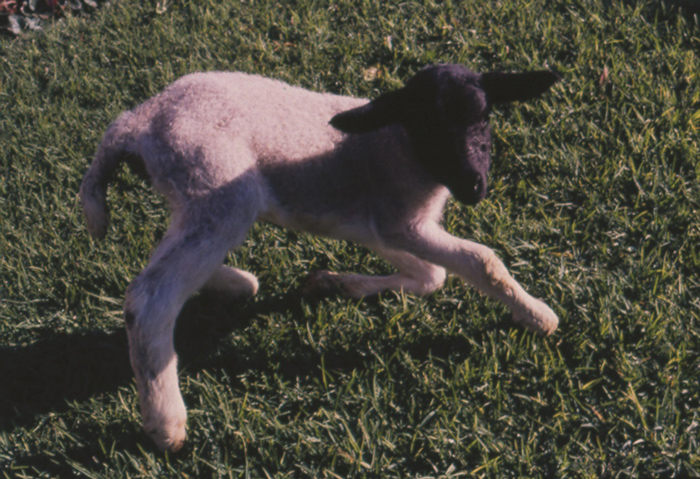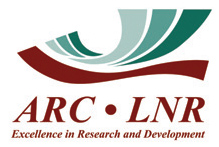
ARC-Grain Crops,
Potchefstroom
 Dr Belinda Janse
Dr Belinda Janse van Rensburg,
ARC-Grain Crops,
Potchefstroom
In a recent article published in the September 2022 issue of SA Graan/Grain, the Fusarium spp. mycotoxins and their effects on humans and animals were highlighted. This article discusses other important fungi, their mycotoxins and the effects on humans and animals. These include mycotoxins produced by Aflatoxin spp., Alternaria alternata and Stenocarpella maydis.
Aflatoxins
Fungi that produce aflatoxins are Aspergillus flavus and A. parasiticus. Maize can be infected by these fungi (Photo 1), but in South Africa, such infections are non-existent or very low and not known to cause serious mycotoxicosis. In groundnuts, however, infections (Photo 2) may be very high and stringent measures are in place to test for these aflatoxins before being used for both human and animal consumption. It is generally accepted that A. flavus produces only AFB1 and AFB2 derivatives, while A. parasiticus produces all the four principal AF derivatives (AFB1, AFB2, AFG1 and AFG2).


In addition, aflatoxin M1 (AFM1) has been identified in the milk of dairy cows consuming an AFB1-contaminated ration. AFB1 represents one of the most harmful, naturally occurring carcinogens known. Both AFB1 and AFM1 are classified by the International Agency for Research on Cancer (IARC) as class I carcinogens (IARC, 2002). Epidemiological studies showed a correlation between the incidence of primary liver cancer in humans and consumption of aflatoxin-contaminated food. Consumption of aflatoxin-contaminated feed by livestock results in oxidative stress, liver necrosis, haemorrhage and death. Exposure to aflatoxins can result in growth impairment and immunosuppression in both animals and humans.
Alternaria alternata-related mycotoxins
Different species of Alternaria produce different host-specific toxins according to their host-pathogen interaction and most of these toxins have been reported from the fungal species identified as A. alternata, a common pathogen of sunflower in South Africa. The major Alternaria mycotoxins belong to three structural classes which include tenuazonic acid (TeA); alternariol (AOH) and the altertoxins. These toxins account for worldwide losses annually of millions of dollars in human and animal health and in condemned agricultural products. These toxins still require adequate studies as a lack of literature on their effects on animals and humans exists primarily due to the cost and techniques required to quantify them.
Stenocarpella maydis-related mycotoxins
Stenocarpella maydis (previously named Diplodia maydis) is one of the most prevalent ear (Photo 3) and stalk rot pathogens of maize, causing reductions of grain quality and yield and producing mycotoxins which have not been extensively studied to date. However, S. maydis-contaminated grain and/or maize stalks are known to cause diplodiosis, a nervous disorder of cattle and sheep. The first record of diplodiosis in South Africa is a report by Van der Bijl during 1914 in the region of Mooi River in KwaZulu-Natal. He reported an outbreak of ‘sickness’ in cattle which was characterised by paralysis following grazing on harvested maize fields. Later in 1919, Mitchell confirmed that maize ears infected with S. maydis caused diplodiosis in cattle. He was able to induce diplodiosis in cattle by feeding them with naturally infected maize ears as well as a culture of S. maydis grown on sterile maize kernels, respectively.

The clinical signs elicited by feeding with naturally infected maize ears collected from previously harvested maize fields were indistinguishable from those obtained by feeding with S. maydis cultures grown on maize kernels. The disease was also reproduced experimentally in cattle and sheep fed sterilised maize kernels artificially infected with S. maydis. Over the last three decades in South Africa, various reports of diplodiosis in livestock were received from veterinarians and producers. These outbreaks have unfortunately not been confirmed to be caused by S. maydis-contaminated residues. Diplodiosis has also more recently been reported in Australia, Argentina and Brazil.
Under field conditions, diplodiosis is limited to sheep and cattle. No cases have been reported in horses or pigs. Goats fed with infected maize kernels developed signs of diplodiosis within two to three days. Maize kernels infected with S. maydis were reported to be acutely toxic to ducklings and rats. In a subsequent study, no correlation was reported between the toxicity of S. maydis strains in ducklings and their ability to induce diplodiosis in cattle and sheep, implying that different toxins may have different symptoms on different animals.
Clinical signs of diplodiosis occurred from six days to two weeks after the animals were introduced to harvested maize fields with infected maize ears and stalks. Animals developed clinical signs from two to eight days after feeding on S. maydis-infected maize kernels. The clinical signs typically last for one to four days. In the beginning the animal’s back is slightly arched, there is a slight quivering of the muscles of the flank and shoulders which are accompanied by excessive secretion of tears and salivation. The animal stands with its legs further apart than normal and is reluctant to move. Locomotory effects, such as a high-stepping gait and falling, are noticed.
These signs become more pronounced with time and eventually the animal is unable to rise. At this stage the animal still feeds and drinks occasionally while lying on the ground, becomes constipated and the hard faecal balls are covered with blood-tinged mucus. Death is preceded by complete muscular paralysis. Recovery, however, is rapid and complete if stock is removed immediately from the maize fields when distinct clinical signs develop. Abortions have been reported in sheep flocks and cattle herds, respectively, that had been exposed to S. maydis-infected stubble or grain resulting in diplodiosis. Results have shown that 66% and 87% of the offspring of ewes exposed to toxic cultures of S. maydis during the second and third trimester of gestation, respectively, were either stillborn or non-viable and the lambs died soon after birth (Photo 4). Researchers have concluded that the developing foetuses were much more susceptible to diplodiosis than adults.

Different toxic metabolites have been isolated from S. maydis-contaminated cultures using various organic solvent systems. These mycotoxins include diplodiatoxin, dipmatol, diplonine and chaetoglobosins K and L. The confirmation and research on the effects of these still require much study.
Diplodiatoxin
Diplodiatoxin has been isolated and characterised from S. maydis-infected maize cultures using bioassay-guided isolation. Administration of diplodiatoxin (265 mg/kg) to chickens induced liver degeneration. The toxicity of diplodiatoxin has also been evaluated in rats, causing a decrease in body weight and feed intake, dullness, irritability, tremors and convulsions.
Diplonine
This neurotoxin has been isolated from S. maydis cultures that had been used previously to induce diplodiosis in sheep. Guinea pigs fed on diplonine-infected feed exhibited incoordination, imbalance, paresis in the hindquarters, frequent falling and lateral recumbency which were followed by recovery. These clinical signs were similar to the neurological signs observed in cattle and sheep with diplodiosis, and diplonine may therefore be the toxic metabolite responsible for this disease or may at least contribute significantly to intoxication.
Chaetoglobosins K and L
Chaetoglobosins include chaetoglobosin K and L. Chaetoglobosin K from maize infected with S. macrospora was reported to be toxic to day-old chicks. Chaetoglobosins, including chaetoglobosin K and L, are likely to be the major component in the ‘unidentified toxin’ mixture that is responsible for diplodiosis in cattle and sheep.
Conclusion
Mycotoxins result in a number of toxic effects in various animals and in humans. Mycotoxins can be reduced by different means during plant growth and grain storage. Some mycotoxins have been well researched and well understood, whereas others have not. Extensive research on the effects of Alternaria spp.- and S. maydis-related mycotoxins is still required to confirm which toxins cause which effects on various animals and humans.
Contact the authors at 018 299 6100 for more information on mycotoxins.





























